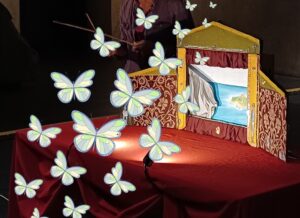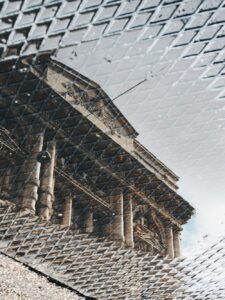Have you ever been struck by the depth of meaning behind a classical work of art? Symbolism plays a crucial role in many artistic creations from past eras, conveying messages and values that often escape the distracted observer. In this post, you will explore how specific colours, shapes and figures can reveal hidden secrets and enrich your understanding of art. Prepare to discover a world of meaning that may change the way you view these timeless works.
Symbolism in classical art
Symbolism in classical art is a rich and complex visual language that allows you to explore deeper meanings. Through the use of symbols, colours and shapes, classical artists communicate ideas, emotions and transcendent values. Understanding this symbolism will help you better appreciate works of art and discover the subtle messages behind them.
Origins and evolution
The origins of symbolism in classical art can be traced back to ancient Greece and Rome, where artists began using symbolic objects and figures to represent abstract ideas. Over the centuries, these practices evolved, influencing the Renaissance and beyond, until an increasingly sophisticated and meaningful artistic language emerged.
Recurring themes and motifs
Recurring themes and motifs in the symbolism of classical art include ideal beauty, life and death, and the divine and the profane. These elements not only reflect the culture and beliefs of the time, but also serve to convey universal messages about the human experience. Understanding these themes can offer you a unique lens through which to analyse artistic works.
By exploring recurring themes, you will discover how myth, nature and heroism are used as means to convey complex concepts. For instance, mythological figures can represent human values, such as love or justice. Furthermore, the use of natural symbols, such as trees or animals, often reflects broader connections with the cycle of life and man’s interaction with the divine. These motifs not only enrich the visual narrative, but also invite you to reflect on existential and philosophical questions, making classical art a journey of discovery and introspection.
Iconography and Meaning
In classical art, iconography plays a fundamental role in communicating profound meanings through symbols. Every image, every figure, and every object represented is never random; rather, each element contains a message that, when understood, enriches your visual experience and cultural understanding. Recognising these symbols allows you to explore beyond the surface of the work, discovering stories, ideals and values of the era in which it was created.
Symbols in historical context
Every symbol in classical art is closely linked to the historical context in which it emerged. You are able to see how some symbols were used to reflect the religious beliefs, social structures and political aspirations of the time. Understanding these connections helps you explore how art not only represents beauty, but also the tensions and dynamics of human history.
Interpretations of themes
The interpretation of themes in classical art requires careful thought and an understanding of cultural nuances. Each theme, be it love, war or mythology, offers multiple keys to interpretation. If you approach these themes with the right curiosity and sensitivity, you can discover how artists from different eras reworked similar ideas in unique ways, influenced by changes in society and philosophy.
Artists and their symbolic language
In classical art, each artist communicates profound messages through a rich and complex symbolic language. You, as an observer, can discover how each figure, colour and composition can reveal hidden meanings. Artists use symbols to express philosophical, religious and cultural ideas, inviting you to interpret their works beyond the surface. Understanding this language allows you to appreciate not only the aesthetic beauty, but also the intellectual content behind each creation.
Great masters of classical art
Great masters such as Caravaggio, Raphael and Michelangelo elevated symbolism to supreme art forms. Through their works, they guide you on a visual journey full of allegory and meaning. Each brushstroke is an invitation to explore human and divine values, letting you become entangled in the world of symbols and classical aesthetics. Getting to know their techniques and vision brings you closer to a deeper understanding of art.
Symbolic techniques and styles
Symbolic techniques and styles vary from artist to artist, but they share a common goal: to communicate meanings beyond the apparent. You may notice the use of specific colours, the choice of shapes and the arrangement of elements to create a symbolic narrative. Each technical choice is designed to evoke emotion, reflection, or to communicate ethical and moral messages, making viewing the artwork a rich and engaging experience.
For example, the colour blue often represents spirituality, while red can symbolise passion or violence. Techniques such as Caravaggio’s chiaroscuro can emphasise the contrast between light and shadow, accentuating the emotional significance of the scenes depicted. Artists also use perspective to guide your gaze to specific symbolic elements within their works. Familiarising yourself with these techniques gives you the chance to decipher the hidden message and further appreciate the brilliant creativity of these masters.
The cultural impact of symbolism
Symbolism has had a lasting impact on culture, influencing not only art, but also literature, music and philosophy. You certainly noticed how recurring symbols in classical art masterpieces could reflect the beliefs and values of the society of the time. This visual language, loaded with hidden meanings, fuelled a profound dialogue between the artist and the viewer, transforming the way we perceive and interpret art.
Influences in the society of the time
In the context of classical society, symbolism was not just an aesthetic device, but a communication tool. You can see how images were used to convey moral and philosophical messages, creating a link between the individual and cultural traditions. Through this art, people could explore complex concepts such as life, death and spirituality.
Legacy in contemporary thought
Today, symbolism continues to influence contemporary thought, as many artists and philosophers draw on these ancient traditions to express new ideas. If you look closely at modern works of art, you will notice how classical symbols are reinterpreted to address current issues, such as identity and the environmental crisis. This perpetual dialogue between the past and the present enriches your understanding of cultural dynamics.
The legacy of symbolism in contemporary thought manifests itself in various fields, from psychology to sociology. Artists and theorists use these symbols to explore the collective unconscious, as in the case of the works of Jung and the Surrealists. This return to classical symbols offers a unique opportunity to reflect on human nature and the evolution of ideas. By recognising and reinterpreting these symbols, you can approach fundamental existential questions that remain relevant today.
Symbolism today
Today, symbolism continues to influence contemporary art and culture, allowing you to discover new meanings in modern works. Today’s artists rediscover symbolic elements, reinterpreting them and adapting them to current contexts. Through this lens, you can appreciate the depth and layers that symbols bring to contemporary works, discovering connections to the past that enrich your aesthetic experience.
Rediscovery in modern art
In modern art, you can observe a rediscovery of symbolism that reinvents ancient concepts. Artists such as Salvador Dalí and Pablo Picasso incorporated classical symbols to express new ideas and emotions. This fusion creates a dialogue between past and present, inviting you to explore the complexity of the works through symbolic keys.
Symbolism in current media
In today’s media, symbolism plays a crucial role in visual and narrative communication. Films, advertisements and TV series use symbols to convey profound messages in an immediate and evocative way. They succeed in engaging you emotionally, making your media experience richer and more meaningful.
In particular, modern advertising uses symbolism to evoke quick emotions and associations in the audience. Visual symbols, such as colours and shapes, are carefully chosen to evoke specific moods, guiding your perceptions and decisions. Similarly, cinema often relies on recurring symbols to represent complex themes, such as the hero’s journey or inner struggle. This strategic use allows you to appreciate a deeper and more engaging narrative, making symbolism a powerful communicative tool in the contemporary world.
What secrets does symbolism hide in classical art?
In conclusion, you may find that symbolism in classical art is a fundamental key to understanding not only the works, but also the culture and values of the time. Every iconic element, from colours to mythological figures, communicates profound messages that can enrich your aesthetic experience. By delving into these symbologies, you will gain a more critical and personal appreciation of the incredible works of art that have marked the history of Western civilisation. Remain open to the hidden meanings and be surprised by their magic.



